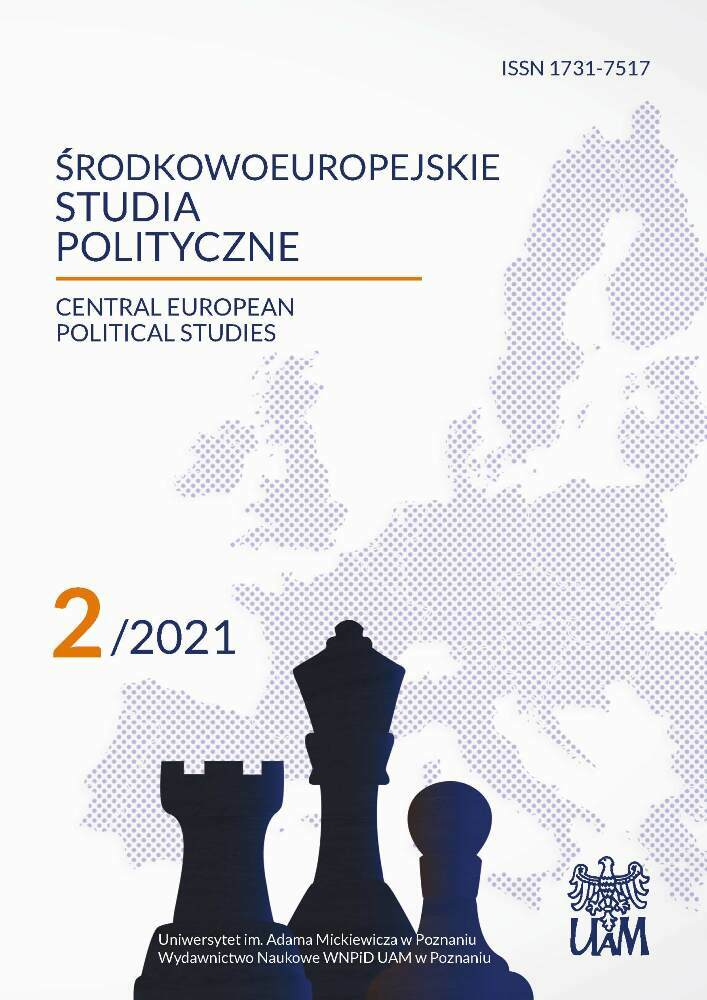Abstrakt
Celem pracy jest zidentyfikowanie konotacji, cech propagandy obliczeniowej oraz ujawnienie, w jaki sposób propaganda obliczeniowa wykorzystuje nowe technologie do manipulowania opinią publiczną.
Hipotezą badania jest założenie, że propaganda obliczeniowa, jako nowy rodzaj propagandy i manipulacji opinią publiczną, zrodzony w erze sztucznej inteligencji, potajemnie i masowo steruje opinią publiczną za pomocą nowych technologii, aby wpływać na procesy polityczne i społeczne.
Bibliografia
Alba M., Welker K., Vitali A., Hasani G. (2016), Hillary Clinton Leaves 9/11 Memorial Early After Feeling ‘Overheated,’ Has Pneumonia, “NBC News”, https://www.nbcnews.com/politics/2016-election/hillary-clinton-falls-ill-9-11-memorial-n-y-n646376, 09.03.2021.
Bastos M., Mercea D. (2019), The Brexit Botnet and User-Generated Hyperpartisan News, “Social Science Computer Review”, vol. 37, no. 1.
Bentzen N. (2018), Computational propaganda techniques, “European Parliamentary Research Service”, https://www.europarl.europa.eu/RegData/etudes/ATAG/2018/628284/EPRS_ATA(2018)628284_EN.pdf, 09.03.2021.
Bradshaw S., Bailey H., Howard P. (2021), Industrialized Disinformation: 2020 Global Inventory of Organized Social Media Manipulation, “Working Paper 2021”, Project on Computational Propaganda, Oxford, UK.
Bureau T. (2020), Fake Followers; Half of the Followers of PM Narendra Modi are Fake in Twitter, “The policy times”, https://thepolicytimes.com/fake-followers-half-of-the-followers-of-pm-narendra-modi-are-fake-in-twitter/, 09.03.2021.
Condliffe J. (2013), Over 60 Percent of Internet Traffic Is Now Driven by Bots, “Gizmodo”, https://www.gizmodo.com.au/2013/12/over-60-percent-of-internet-traffic-is-now-driven-by-bots/, 09.03.2021.
Chen B. (2007), A brief history of all things, Yuanhua.
Choe S. (2017), Former South Korean spy chief sentenced for trying to sway election, “The New York Times”, https://www.nytimes.com/2017/08/30/world/asia/south-korea-spy-chief-sentenced.html, 09.03.2021.
Kemp S. (2020), Digital in 2020, “We are social”, https://wearesocial.com/blog/2020/01/digital-2020-3-8-billion-people-use-social-media, 09.03.2021.
Haq E., Braud T., Kwon Y., Pan H. (2020), A Survey on Computational Politic, https://www.researchgate.net/publication/335233362_A_Survey_on_Computational_Politics, 09.03.2021.
Jones M. (2019), Propaganda, Fake News, and Fake Trends: The Weaponization of Twitter Bots in the Gulf Crisis, “International Journal of Communication”, vol. 13, https://ijoc.org/index.php/ijoc/article/viewFile/8994/2604, 09.03.2021.
Laney D. (2001), 3D data management: Controlling data volume, velocity and variety, “META Group Research Note”.
Lazer D. et al. (2009), Computational social science, “Science”, no. 5915.
Lin H., Yang L., Ren J. (2017), A Study of Computational Politics in the Era of Big Data, “Journal of Chinese information processing”, vol. 31, no. 3.
Luo X., Zhang M. (2019), Operational mechanisms of Western computational propaganda and global governance, Media Watch, Hillary’s health doubts continue to appear again stand-in conspiracy theory, “Shijie”, https://kknews.cc/world/g3ekzl.html, 09.03.2021.
Pyrinis A. (2017), Fake News is Real: The Rise of Computational Propaganda and Its Political Ramifications, Berkeley Political Review, “Berkeley Political Review”, https://bpr.berkeley.edu/2017/11/06/fake-news-is-real-the-rise-of-computational-propaganda-and-its-political-ramifications/, 09.03.2021.
Oliveira F. et al. (2016), The Influence of Retweeting Robots During Brazilian Protests, “49th Hawaii International Conference on System Sciences”, https://folivetti.github.io/files/HICSS-Eric.pdf, 09.03.2021.
Ou Y., Xia Y. (2019), The Hidden Persuasion, “Cankaowang”, https://m.fx361.com/news/2019/0103/6256077.html, 09.03.2021.
Salganik M. (2017), Bit by Bit: Social Research in the Digital Age, Princeton University Press, Open review edition, Princeton, NJ.
Shorey S., Howard N. (2016), Automation, Big Data, and Politics A Research Review, “International Journal of Communication”, vol. 10, http://www.datascienceassn.org/sites/default/files/Automation%2C%20Big%20Data%2C%20and%20Politics%20-%20A%20Research%20Review.pdf, 09.03.2021.
Tufekci Z. (2014), Engineering the public: Big data, surveillance and computational politics, First Monday, vol. 19, no. 7.
Vault M. (2019), The Definitive Glossary of Higher Mathematical Jargon – Algorithm. https://mathvault.ca/math-glossary.
Wan J. (2016), Islamic State’s online propaganda, “Renminwang”, http://media.people.com.cn/n1/2016/0309/c402792-28184900.html, 09.03.2021.
Woolley S., Howard P. (2016), Political Communication, Computational Propaganda, and Autonomous Agents, “International journal of Communication”, vol. 10, https://ijoc.org/index.php/ijoc/article/viewFile/6298/1809, 09.03.2021.
Zhang H., Zhao B., Shi W. (2020), Social bots: A behavioral analysis of Twitter participation in Sino-US trade negotiation issues, “Journalism”, vol. 2, no. 2.
Licencja
Prawa autorskie (c) 2021 Jin Yang

Utwór dostępny jest na licencji Creative Commons Uznanie autorstwa 4.0 Międzynarodowe.

